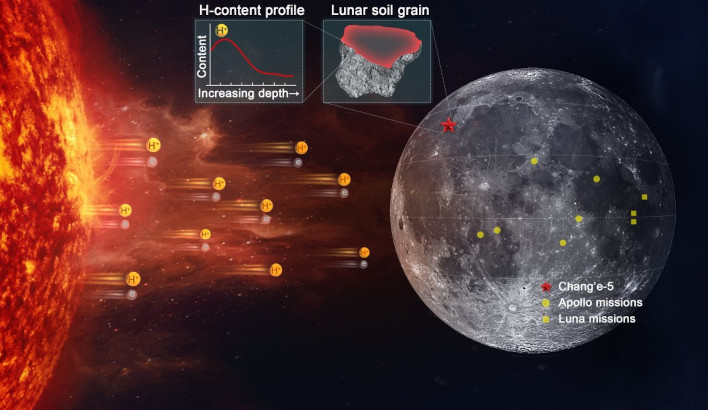Scientists Make A Surprising Discovery Of The Origin Of Water On The Moon
A joint research team from the National Space Science Center (NSSC) and the Institute of Geology and Geophysics (IGG) stated they have discovered that the "Chang'e-5 lunar soil grain rims have higher concentrations of hydrogen and low deuterium/hydrogen (D/H) ratios." The findings indicate that the water found in the samples from Chang'e-5 originated from the solar wind (SW).
The new research has associations with our understanding of the origin and distribution of water on the Moon. It could also help scientists understand the origin of water here on Earth as well.
"The polar lunar soils could contain more water than the Chang'e-5 samples," stated Professor LIN Yangting from IGG and a corresponding author of the study.
Prior studies have shown that water on the lunar surface varies with both latitude and time of day. This implies a rapid desorption rate from the lunar surface.
This is in contrast to the six Apollo missions and three Luna missions, according to a recent press release. All of the soil samples collected during those missions were taken at low latitudes. The Chang'e-5 mission returned samples from a middle-latitude location.
The team of researchers used heating experiments on a subset of the grains to demonstrate that the "SW-implanted hydrogen could be preserved after burial." Researchers took that information along with previous data and developed a model of the "dynamic equilibrium between the implantation and outgassing of SW-hydrogen in soil grains on the moon." This indicates that the temperature (latitude) plays an important role in the "implantation and migration of hydrogen in lunar soils."
Professor LIN remarked about the new study, "This discovery is of great significance for the future utilization of water resources on the moon." He continued, "Also, through particle sorting and heating, it is relatively easy to exploit and use the water contained in the lunar soil."



